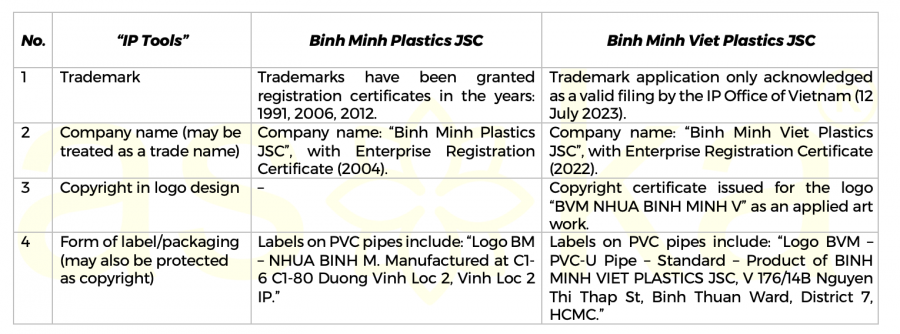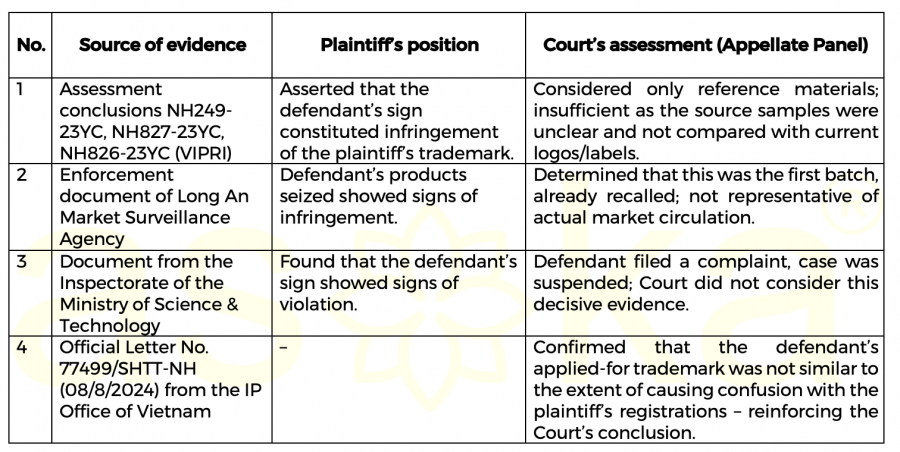A page that aggregates the latest news on trademark registration and intellectual property of Asoka Law, accompanying businesses in protecting intellectual property.
On 25 April 2025, the High People’s Court in Ho Chi Minh City issued Judgment No. 40/2025/KDTM-PT in an intellectual property dispute between Binh Minh Plastics JSC (plaintiff) and Binh Minh Viet Plastics JSC (defendant). The judgment has stirred extensive discussion within the business community and Vietnam’s IP field. Many public comments suggested that the defendant’s mark (the company was incorporated in 2022) sounded “similar” or “copying” the mark of Binh Minh Plastics JSC - an established manufacturer of plastic pipes on the market (founded in 1977 with nearly 50 years of operation). However, public opinion and even assessment conclusions issued by the Vietnam Intellectual Property Research Institute (VIPRI) were treated only as reference sources in the adjudication of this case.
Below, Asoka Law’s IP lawyers analyze several key takeaways from the Court’s reasoning and derive hard-won lessons for businesses seeking to protect their IP assets.

The two trademarks of Binh Minh Plastics JSC and Binh Minh Viet Plastics JSC that were examined in the case.
A notable feature of Judgment No. 40/2025/KDTM-PT is that the Appellate Panel did not focus solely on the shared word element “BÌNH MINH” appearing in registered marks or company names. From first instance to appeal, the Court consistently emphasized putting the signs into their overall context: logos, product labels affixed to goods, the manner of presentation, and origin information. On that basis, the Court concluded that the parties’ logos and labels were “entirely different, not overlapping, and insufficient to establish likelihood of confusion.”
This reminds businesses of a practical truth: a trademark certificate alone is not always sufficient to secure brand protection. In practice, IP protection is portfolio-based, complex, and interwoven; it cannot be reduced to a few isolated factors.
To make this clearer, Asoka Law sets out the “IP tools” each party brought to this dispute:

A list of the “IP tools” of Binh Minh Plastics JSC and Binh Minh Viet Plastics JSC.
When disputes arise, courts consider the overall presentation, real-world use on the product or service, target consumers, and market channels.
Lesson (1): Equip your business with as many relevant categories of IP rights as reasonably possible to protect its assets. This is the approach Asoka Law consistently advises when helping clients understand IP law and structure protection.
One of the most hotly debated issues in the BÌNH MINH case was the legal weight of industrial property assessment conclusions issued by VIPRI.
The plaintiff submitted multiple assessment conclusions (NH249-23YC/KLGĐ, NH827-23YC/KLGĐ, NH826-23YC/KLGĐ…), which included statements that the sign “NHỰA BÌNH MINH” on the defendant’s PVC pipes constituted a trademark-infringing element. In addition, the Market Surveillance authority and the Inspectorate of the Ministry of Science and Technology had previously issued documents tending toward a finding of infringement by Binh Minh Viet Plastics JSC.
However, the Appellate Panel held that:
To aid readers, Asoka Law summarizes the layers of evidence used - and how the Court evaluated them:

Summary of how the Court assessed the evidence in the dispute between Binh Minh Plastics JSC and Binh Minh Viet Plastics JSC.
Lesson (2): Do not “outsource” success to expert assessments and expect to win automatically. To protect IP assets effectively, businesses should:
From this case, Asoka Law draws several lessons to help businesses take the initiative in protecting their IP assets:
1. Implement a “dual marks” mechanism: register trademarks and copyright in the logo from the outset, in parallel with ongoing monitoring and evidence-collection mechanisms.
Asoka Law has advised many businesses and has run the CopyRIGHT NOW! program since 2024 to support “dual protection,” achieving a 100% filing success rate for participating clients.
Register for “dual protection” here: CopyRIGHT NOW!
2. Collect as much real-world evidence as possible, including but not limited to legal and supporting actions: preparing notarial/bailiff’s records, reports on consumer feedback from product use, and market data to substantiate confusion.
3. In litigation, do not rely solely on assessment conclusions; proactively build a comprehensive evidentiary record, as the Court retains independent discretion to evaluate evidence.
4. When entering the market, design for distinctiveness from the outset: avoid commonly used names or phrases that lack strong differentiating features for a trademark.
A brand is not protected by a single, stand-alone right. To build a robust protection strategy, businesses need multiple layers of rights and must proactively prevent legal risks. Asoka Law has accompanied more than 3,500 domestic and international enterprises in building and protecting their IP assets.
Contact Asoka Law for a comprehensive check-up of your IP portfolio so we can design and implement a timely, end-to-end protection strategy.
Email: consult@asokalaw.vn | ipsupport@asokalaw.vn
Hotline: 0961 914 328 (South) | 0984 333 629 (North)